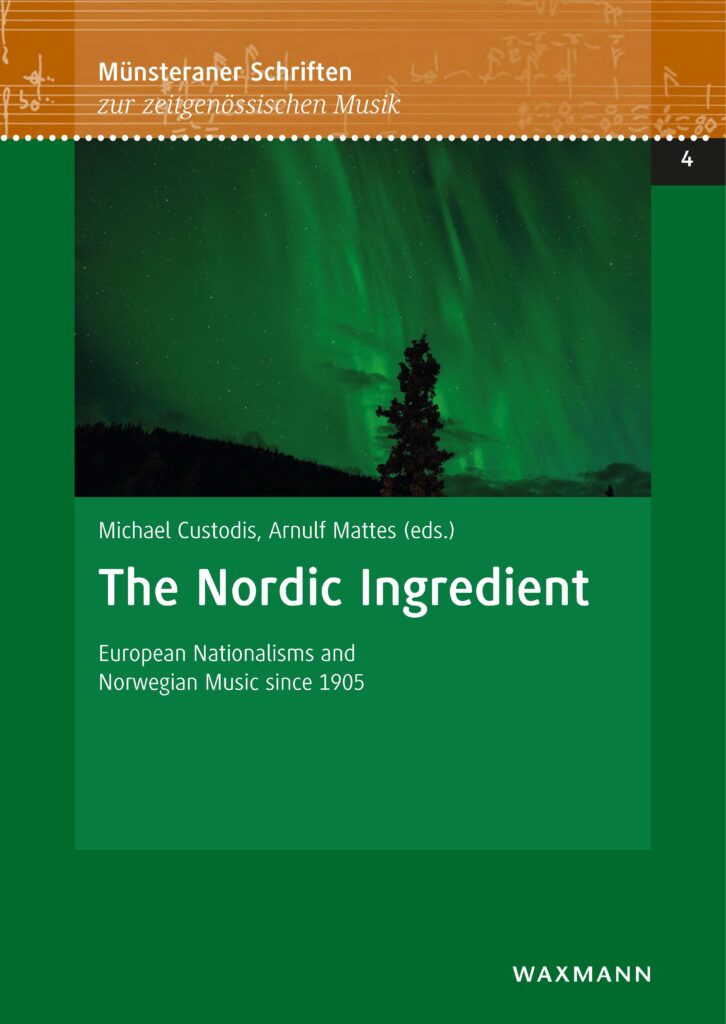Notions of the ‘Nordic’ have always been an issue in Norway’s national identity building, both before and after it became a sovereign state in 1905. Accordingly, Norwegian music has expressed a sense of ambivalence towards being conceived as ‘Nordic’ from the outside: A strong sense of ‘Norwegianness’ (forged during the heroic age of cultural nation-building in the 19th century) was challenged by the advent of new, nationalistic currents in the 1930s, which used notions of the Nordic as a political weapon. This book shows how music expresses affirmation and ambivalence towards the ‘Nordic’ as an ingredient of Norwegian national identity across musical genres. Further, it explores the contingencies of national music and the dramatic changes in 20th-century European political history. At the same time, it sheds new light on the difference between musical nationalism and national music.
The Nordic Ingredient
European Nationalisms and Norwegian Music since 1905
Content
- Ina Rupprecht: Manifesting the National Idea. Edvard Grieg or How His Biographers Saw Him
- Andreas Bußmann: Expressing “Nordic” Greatness. Wagnerism in Norway 1905–1945
- Ingrid Loe Landmark: Ideas on National Music in Interwar Norway
- Arnulf Mattes: “Monumentalism” in Norway’s Music 1930–1945
- Michael Custodis: Master or Puppet? Cultural Politics in Occupied Norway under GW Müller, Gulbrand Lunde and Rolf Fuglesang
- Friedrich Geiger: Harald Sæverud’s „Kjempeviseslåtten“ – A Typical Resistance Composition?
- Arvid O. Vollsnes: Rebuilding Norwegian Music From Valevåg to Tanglewood and Darmstadt
- Michael Custodis: “Nordisk” – “Aryan” – “Identitär”. Music for the New Right
- Arnulf Mattes: No Escape from Politics? On Grieg’s Afterlife in Norwegian Memory Culture
- Boris Previšić: Resistance to Totalitarianism. The Polyphony of Literature and Music
Quote
Details
Editor(s): Michael Custodis and Arnulf Mattes
Publisher: Waxmann Verlag
ISBN: 978-3-8309-3896-5 e-book: 978-3-8309-8896-0, open access
Reviews
review by Tobias Reichard for H-Soz-Kult (6 April 2021)
Dass die vielfältigen, bislang jedoch kaum untersuchten musikalischen Kontakte zwischen Norwegen und Deutschland ein ergiebiges Forschungsfeld darstellen, dürfte nach der Lektüre der beiden vorgestellten Bände kaum mehr zur Debatte stehen – ebenso wenig der Umstand, dass Musik in der Geschichte der politischen Beziehungen beider Länder eine zentrale Rolle einnahm. [...] Zwischen den insgesamt 18 thematischen Beiträgen – bestehend aus historischen Überblicksartikeln, methodisch-theoretischen Essays und musikanalytischen Fallstudien – stellen sich immer wieder erhellende Querverbindungen ein. Auch deswegen ist es gewinnbringend, die beiden Bände als zusammengehörig zu betrachten. [...] Obwohl beide Bände im Umfang überschaubar sind, liegen hier zweifellos gewichtige Publikationen vor. Die versammelten Aufsätze entfalten ein breites und facettenreiches Panorama, betreten mitunter genuines Forschungsneuland und eröffnen durch ihren Fallstudiencharakter zahlreiche Ansätze für künftige Untersuchungen, auch weit über die deutsch-norwegischen Musikbeziehungen hinaus. Zudem lenken sie den Blick auf die noch zu wenig aus vergleichender Perspektive betrachteten internationalen Musikbeziehungen im 20. Jahrhundert und insbesondere das Musikleben unter deutscher Besatzung, die erst allmählich größere Beachtung finden. Viele Beiträge zeichnen sich zudem durch intensive Arbeit mit teils unbekannten Archivquellen aus und sind durch faksimilierte Dokumente und Bildmaterial angereichert.
review by Daniel M Grimley in music&letters, Vol. 103 (Feb. 2022), No. 1, pp. 189-191
For most international readers, the history of Norwegian music in the twentieth century, following the death of Edvard Grieg in 1907, remains a closed book. Two new volumes, edited by Michael Custodis, Arnulf Mattes, and Ina Rupprecht, published as part of the Norwegian–German research project ‘Nordic Music Politics: Resistance, Persecution, Collaboration, and Reintegration in Norway’s Music Life, 1930–1960’ and issued in conjunction with a pair of symposia held at the universities of Bergen and Münster, now make a timely and substantial contribution towards filling that gap. [...] These two slim but vital volumes, generously published in English, hence offer more than simply a significant contribution to the history of twentieth-century Norwegian music. They also encourage us to understand Norway and the wider nordic region not as a marginal periphery on the north-western edge of the continental mainland, but as an exemplar for the broader struggles—cultural, political, and aesthetic—that shaped Europe on either side of the Second World War and under whose shadow we still remain.

